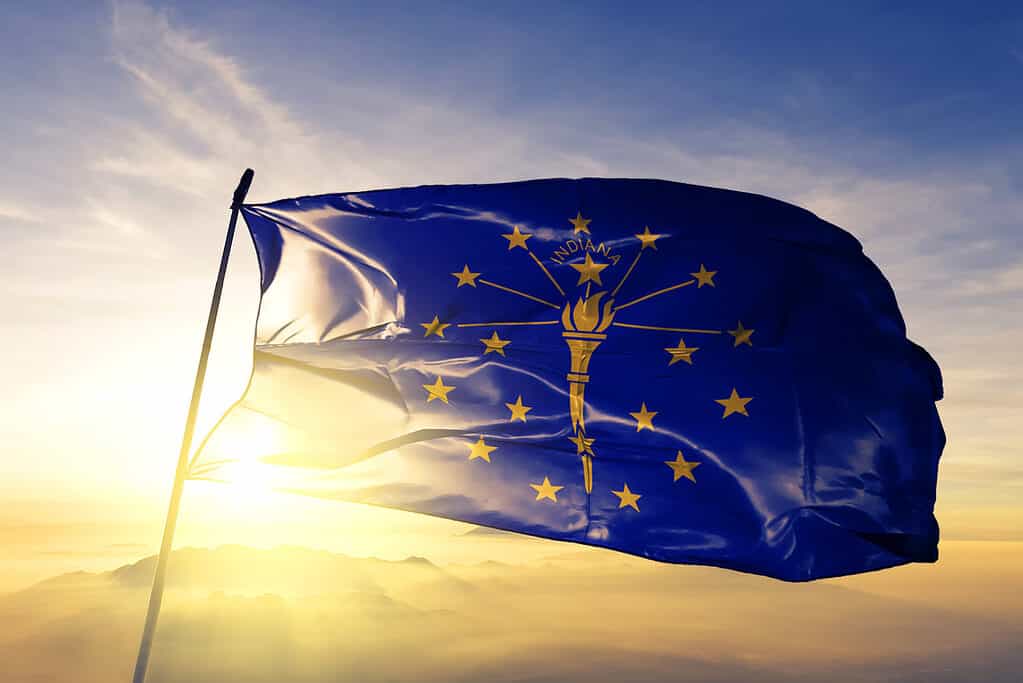While the name sounds like something that should be related to India, Indiana is actually one of the 50 states in the United States. However, historians say that the state’s name could be traced back to the American Indian tribes who resided in the area when the Europeans arrived.
Indiana borders Michigan and Lake Michigan to the north, Kentucky to the south, Ohio to the east, and Illinois to the west. This strategic location in the midwestern region of America is one of the reasons that the state is known as “the crossroads of America,” a term that also serves as its motto.
With a land mass of 94,321 km² (36,417 square miles), Indiana is reportedly the 38th biggest state in the US. And with a population of about 7 million as of 2021, it is the 17th most populous. Indiana was admitted as the 19th state of the Union on the 11th of December, 1816, with Indianapolis becoming its capital in 1825.
Since the state’s history is linked to American Indian tribes, what role did the Europeans play in the founding of Indiana? And more importantly, how did Indiana become an established state with its flag? Let’s take a walk down memory lane!
Founding of Indiana

Indiana became the 19th state of the Union in 1816.
©iStock.com/Oleksii Liskonih
The area now known as Indiana was once inhabited by some native American tribes, such as the Miami, Shawnee, and Illini, and some of these tribes still live in the state today. These groups of people arrived in the region around 8,000 BC, and as the years progressed, tribal dominance contributed to the development of the area.
Then, around 1614, Samuel de Chaplain, a French explorer, discovered the land; and by the late 1600s, the French had taken control of the land. The Kingdom of France ruled Indiana for a century until the English took over after the French and Indian War, also known as the Seven Years’ War, between 1754 and 1763. Great Britain ruled the Indiana Territory for twenty years until the end of the American Revolutionary War in 1783, when Britain ceded some lands, including Indiana, to America. Indiana finally became the 19th state of the Union in 1816 and actively participated in the Civil War between 1861 and 1865.
Characteristics of Indiana
Indiana comprises three main geographical regions. One is Northern Indiana which is made up of the Great Lake Plains, an area filled with flat and rolling farmlands, as well as a few cities and towns. Then, there’s the Tipton Till Plain, located in the central part of the state. This region is the most populous and home to Indianapolis metropolitan area. The Till Plain also features Hoosier Hill, which is Indiana’s highest point.
Finally, the Southern Hills and Lowlands region in Southern Indiana boasts a mix of forest, hilly areas, and farmland. Landmarks in this area include the rugged Norman Upland, the flat Wabash Lowland, and the Crawford Upland.
Indiana is also part of the east-central lowlands between the Appalachian Mountains and the Mississippi River. Another interesting fact about the state is that due to glacial action, it now possesses a rich deposit of gravel, glacial till, loess, and sand. Southern Indiana has the highest deposits of these soil materials, making it the ideal area for different agricultural practices.
History of Indiana State Flag
Unlike several states and countries that had their flag linked to colonization and oppression, the Indiana state flag came into existence through an entirely different process. During Indiana’s centennial anniversary in 1916, the state’s general assembly decided to adopt a state flag. Following this, the General Assembly asked the Indiana Society of the Daughters of the American Revolution to sponsor a contest for a state flag design. To attract more contestants, a one hundred dollar cash prize was announced as the award for the winner.
The Society received over 200 submissions, and after careful consideration, Paul Hadley of Mooresville emerged as the contest winner.
The winning design was a blue field with a torch surrounded by 19 stars – 13 in an outer circle, an inner semi-circle of five stars, and a large star above the torch. The flag was officially adopted on the 31st of May, 1917. While Hadley’s flag design was hardly tampered with, the General Assembly decided to include the word “Indiana” in a crescent shape above the torch. It was originally called the state banner but was later renamed to the state flag in 1955 when Indiana standardized the flag dimensions.
The Symbolism of Indiana State Flag

The big star above the torch on Indiana’s flag represents Indiana as the 19th state in the Union.
©iStock.com/rarrarorro
The gold torch in the flag represents enlightenment and liberty; its rays signify its far-reaching influence. Then the thirteen stars in the outer circle represent the original thirteen states of the union. The other five stars in the semi-circle symbolize the next five states to become a part of the union. The big star above the torch represents Indiana as the 19th state in the Union.
In 2001, a survey was carried out by the Northern American Vexillological Association (NAVA) on various flag designs across US territories, states, and Canadian provinces. Indiana’s flag was ranked 32nd out of the 72 flags in the survey. Also, a variant of Indiana’s flag was adopted as Gotham’s flag in the 1989 movie, “Batman.”
Where Is Indiana Located on a Map?
Indiana is in the Midwest and one of eight states in the Great Lakes Region. It is located south of Michigan, north of Kentucky, west of Ohio, and east of Illinois. Northwest of Indiana is Lake Michigan. Indiana is separated from Kentucky by the Ohio River.
The photo featured at the top of this post is © iStock.com/Maksym Kapliuk
Thank you for reading! Have some feedback for us? Contact the AZ Animals editorial team.







